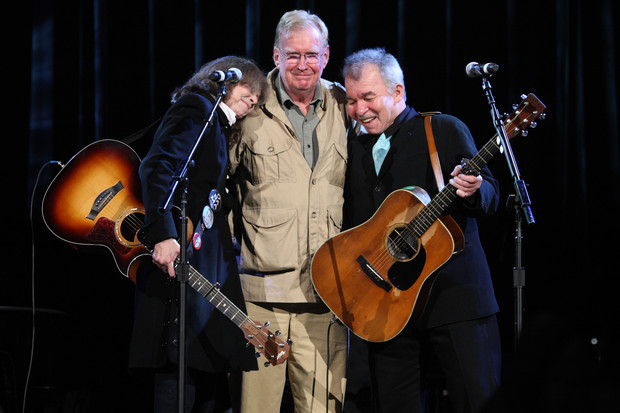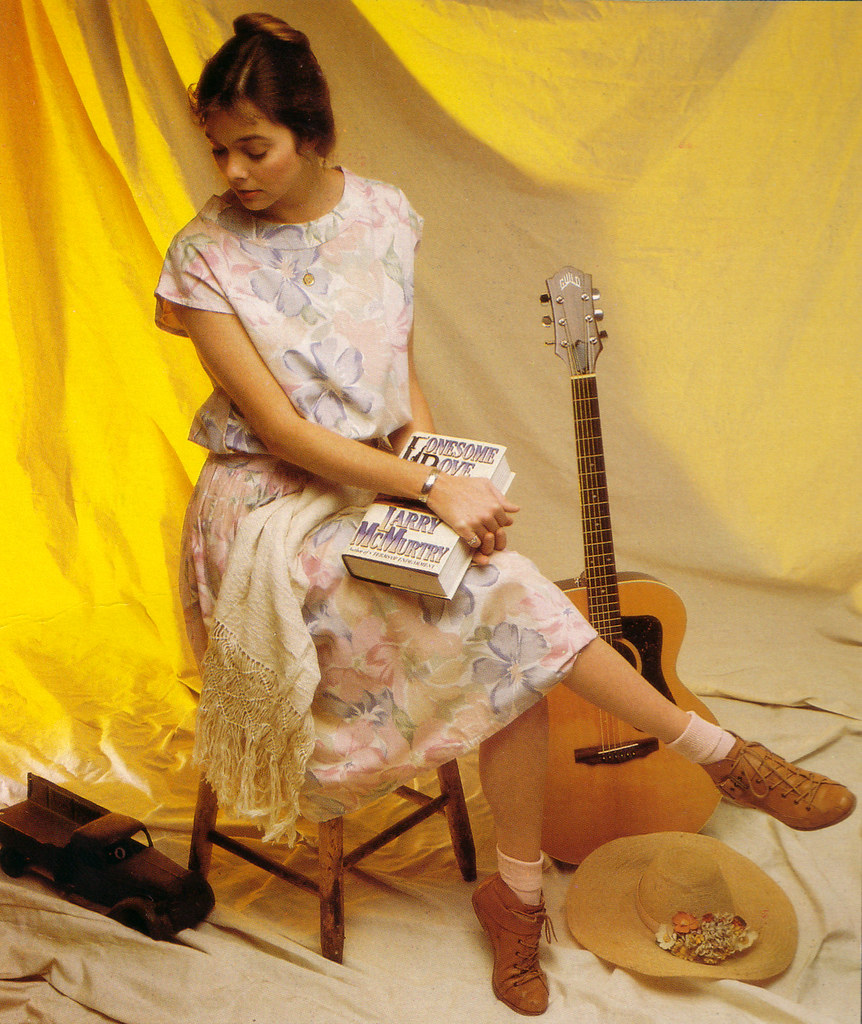
Nanci Griffith. Courtesy The New York Times
Though slightly belated, my regard for, and honoring of, the late Nanci Griffith is no less ardent. It was a shock to hear of her passing, August 13 at 68, and only now am I gathering some thoughts and feelings. I was also belated in becoming a true fan of hers and, though I saw her live once, I missed the opportunity to write substantially about her in her lifetime.
She had survived breast cancer and thyroid cancer in the mid-1990s but, by her choice, the cause of death is unreported. But Nanci Griffith was a great talent of contemporary singer-songwriting, or what even became “progressive country,” or, as she preferred, “folkabilly.” She was among the most historically mindful and learned of such artists, living within and extending their own tradition. It was all the more impressive that she was a woman in a genre, like so many, still dominated by men, especially as she was part of the extraordinary generation of Texas singer songwriters that emerge from the so-called “outlaw” era of troubadours.
With her apple-cheeked prettiness and easy smile, she hardly seemed “outlaw,” but Griffith understood well the expanding possibilities of contemporary songwriting that the alt-country outlaw movement provided.
She may have involuntarily related to the outlaw sensibility. Griffith told The Irish Times that her family was “really dysfunctional,” and her song “Bad Seed,” from the 2012 album Intersection, was addressed to her father, and included the lines “Bad seed, there’s a darkness I can’t hide – too much pain to keep inside.”
She learned to play guitar by watching a PBS TV series hosted by Laura Weber and started to write her own songs. At the age of 12, she debuted as a singer-songwriter at The Red Lion club in Austin.
She was inspired by country-music icons like Loretta Lynn. “She was the first singer I ever saw of the female gender who wrote her own dad-gum songs and played her own rhythm guitar,” Griffith said of Lynn in a 1989 Austin City Limits appearance. , and she defined herself by saying: “You take a whole lot of Woody Guthrie and a whole lot of Loretta Lynn, swoosh it around and it comes out as Nanci Griffith,” she told The Irish Times.
The great African-American songwriter Odetta was another key influence, as was the fellow Texan Townes Van Zandt, with his uncanny gift for vivid and moving storytelling songs.
Years later, the book she co-wrote, Nanci Griffith’s Other Voices was subtitled A Personal History of Folk Music, and conveyed the depth of her appreciation of the vistas the art form spanned. Certainly since Bob Dylan, singer-songwriting, as she exemplified, became more skilled, nuanced and literate, and worthy of the mantle of “art,” even though it was nominally a “mere” folk art form.
Impressive and reflective with a certain ambition, the book conveyed her insight and ideals about the long line of folk song-writing tradition. “”Preserving the history of each generation of humankind is like creation to me. There is the urge to continue that. And the way I do it is through music. I certainly try to bring real live people into my music and champion regular people, regular folks.” 1
Author and activist Gloria Steinem commented: “Nanci Griffith Is a poet with a guitar, a creator of both thought and sound, and now she introduces us to the full music that inspired her. This book stands on its own and explains the layers of depth we hear in Nanci’s songs.” 2
The 1998 book took off from her acclaimed 1993 album Other Voices, Other Rooms, which probed the history of folk music with brilliant pinpoints.
That album (which earned her a Grammy) and its sequel, Other Voices, Too (A Trip to Bountiful), provided as deep and concise a sense of historic and contemporary folk and songwriting traditions as anything this side of Smithsonian collections. It honored and and interpreted, among others, the work of Dylan, Townes Van Zandt, John Prine, Woody Guthrie, Jerry Jeff Walker, Guy Clark, Johnny Cash, Richard Thompson, Sandy Denny, Kate Wolf, Pete Seeger, Tom Paxton, Ian Tyson, and even reaching as far back as Stephen Foster, and a traditional African song.

Nanci Griffith, Jim Rooney, center, and John Prine hug after a performance by Nanci Griffith and John Prine at the Americana Music Association awards show in Nashville, Tenn., Thursday, Sept. 17, 2009. (AP Photo/Josh Anderson)
Yet there wasn’t a whiff of the academic about this. Aided by her longtime producer Jim Rooney (pictured above with Griffith and John Prine), these albums sounded all very personal for her. She sang all of the songs though sometimes with guest performers. Her starkly testifying interpretation of Van Zandt’s “Tecumseh Valley” carried at least as much emotional weight as the songwriter’s own, given that it is the tragic story of a young woman, named Caroline, whose desperate lack of means forces her to sell her body, before fate catches up to her. 3
Part of the song’s genius is Van Zandt’s understated narrative voice. A recent You Tube comment, remembering both artists, cherished the line: “and it seemed to me, the sunshine walked beside her.”
Speaking of the legendary Van Zandt, Griffith was instrumental in producing one of the most memorable live tribute concerts, an Austin City Limits program which gathered, for a round-robin of Townes songs, a splendid lineup that included herself, Willie Nelson, Steve Earle, Guy Clark, Emmylou Harris, Lyle Lovett, Rodney Crowell, Peter Rowan, Jack Clement (Van Zandt’s producer) and John T. Van Zandt (Van Zandt’s son).
Griffith’s voice, a crystalline contralto with clarion projection, sometimes was characterized as girlish, and could convey vulnerability and tenderness, but I never heard easy sentimentality. Her voice was fully capable of a steely strength, a quirky Texas twang, tart irony and even a virtual growl, as the lyric or emotion demanded.
Some observers sniffed at her apparent literary self-consciousness, when she posed on several album covers clutching favorite books, by authors like Larry McMurtry and Truman Capote. But this struck me as heartfelt celebration of literary value, especially as she proved her substantial skill at songwriting and storytelling, and as a luminous melodist, even from some of her earliest recorded efforts. That included songs like “Love at the Five & Dime,” “Ford Econoline,” “Mary and Omie,” “Gulf Coast Highway,” “I Wish It Would Rain,” “It’s a Hard Life Wherever You Go,” “Once in a Blue Moon,” “Saint Teresa of Avila,” “Bethlehem Steel,” “If I Could Only Fly,” and “Hell No (I’m Not Alright),” among others.

Nanci Griffith on the back cover of “The Last of the True Believers,” from 1986. Courtesy flikr
Her title song from the album Clock Without Hands borrows the title of Carson McCullers’ last novel, and contemplates the metaphor, an awareness poignantly muted and transient:
I’m a clock without hands/ I’m walking through the midnights/ Counting all the moments/ Of the loves I’ve left behind./ Crying on the shoulders of the days/ I’ve forgotten now.
And Griffith selected covers with great acumen. Two of her most popular songs were by others, demonstrating her critical and interpretive range: “From a Distance,” and “Lone Star State of Mind,” not to mention the brooding Sinatra standard “In the Wee Small Hours of the Morning” or, by contrast, Sonny Curtis’ fiery ode to lost-cause rebellion (with Curtis harmonizing) “I Fought the Law.”
She also had the vision, or chutzpah, to record an album of her work titled Dust Bowl Symphony, with the London Symphony Orchestra, which proved more cinematic than grandiose.
Though she hadn’t released a studio album since 2012’s excellent Intersection, there’s still a sense now of “where do we go from here?” as Nanci Griffith, like the clock without hands, intuitively beat an illumined pulse forward, as much as she did on the present and the past.
____________
1 Nanci Griffith and Joe Jackson, Nanci Griffith’s Other Voices, A Personal History of Folk Music, Three Rivers, 1998, 71
2 Nanci Griffith’s Other Voices, back cover.
3. Here’s Griffith and Van Zandt doing “Tecumseh Valley” together. The pathos seems lightly carried, with the see-saw rhythm. And yet, deferential Griffith has her radiant moment:

